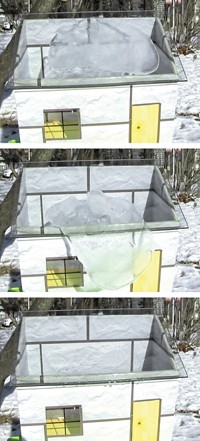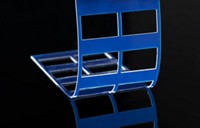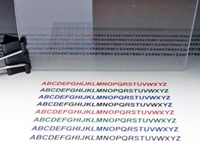Advertisement
Grab your lab coat. Let's get started
Welcome!
Welcome!
Create an account below to get 6 C&EN articles per month, receive newsletters and more - all free.
It seems this is your first time logging in online. Please enter the following information to continue.
As an ACS member you automatically get access to this site. All we need is few more details to create your reading experience.
Not you? Sign in with a different account.
Not you? Sign in with a different account.
ERROR 1
ERROR 1
ERROR 2
ERROR 2
ERROR 2
ERROR 2
ERROR 2
Password and Confirm password must match.
If you have an ACS member number, please enter it here so we can link this account to your membership. (optional)
ERROR 2
ACS values your privacy. By submitting your information, you are gaining access to C&EN and subscribing to our weekly newsletter. We use the information you provide to make your reading experience better, and we will never sell your data to third party members.
Coatings
Microscale armor toughens super water-repellent surfaces
Researchers add a microstructured frame around fragile superhydrophobic nanostructures to improve their durability
by Prachi Patel, special to C&EN
June 4, 2020
| A version of this story appeared in
Volume 98, Issue 22

Superhydrophobic coatings that make water droplets bounce off, taking dust and debris with them, could lead to self-cleaning solar panels, windows, and cars. But these coatings are not durable, which has limited them to being lab curiosities. Researchers have now made a new coating that is 10 times more mechanically robust than previous ones (Nature 2020, DOI: 10.1038/s41586-020-2331-8).
The coatings can be directly made on various surface types, including on ceramics, glasses, and metals. “That’s the beauty of this,” says Robin H. A. Ras, an applied physicist at Aalto University, who led the research team. “It’s a generic concept that can be applied over a wide range of materials.”
Superhydrophobic coatings repel water with the help of nanoscale pillars or bumps that trap air between them. The air acts as a lubricating layer between the liquid and the solid surface, Ras explains, leading to low amounts of friction and adhesion so that liquids bead up and roll off. But the nanostructures are fragile. “A light touch from a finger would damage the nanostructures and all the nice properties are lost,” he says.
So Ras, Xu Deng of University of Electronic Science and Technology of China, and their colleagues decided to add a microstructured frame around water-repelling nanostructures as a sort of armor to protect them. This frame is an array of microscopic pits that look like inverted pyramids with either square, triangular, or hexagonal bases. The researchers fill the cavities with fluorinated silica nanoparticles or spray the pits with a commercially available nanostructured superhydrophobic coating. The pits hold the nanomaterials in place, Ras says, and “a finger or a knife will just slide over the surface.”
When the surface is placed at an angle, water droplets that condense on it slowly come together and roll off, washing dust particles accumulated on the surface. In self-cleaning tests in the lab, the researchers placed a dusty surface, tilted at a 45° angle, in a chamber with humid air. After 25 minutes, they found perfectly clean surface. They also tested glass with the superhydrophobic coating as a solar cell cover. It was transparent, kept the cell clean, and did not affect the cell’s efficiency.
To test for mechanical robustness, the team rubbed the surfaces repeatedly with a polypropylene sheet. The surfaces maintained their water repellency after 1,000 of these cycles, 10 times longer than the silica nanomaterial or the commercial dry coating could withstand. The surfaces preserved their superhydrophobicity even after scraping with sandpaper and a sharp steel blade.
“An order of magnitude increase in the number of abrasion cycles that can be tolerated by the surface is a significant advancement in this field,” says Chiara Neto, a chemist at the University of Sydney. But what’s most attractive about the work is that the researchers propose important design principles that can be used in the future.
Manish K. Tiwari, a mechanical engineer at University College London, says that the surfaces would need to withstand high-speed liquids if such coatings are to be used on vehicles or infrastructure that face harsh weather. Nevertheless, he says, this work “should inspire and reinforce investigations into durable superhydrophobic surface manufacturing.”





Join the conversation
Contact the reporter
Submit a Letter to the Editor for publication
Engage with us on Twitter